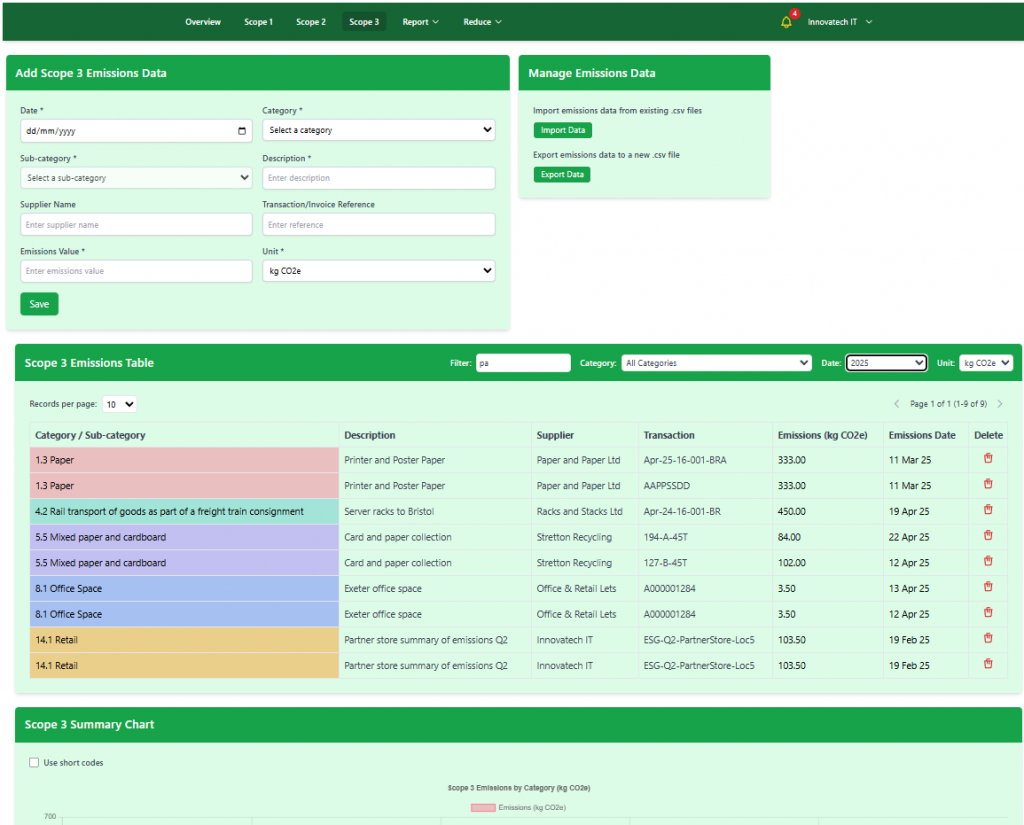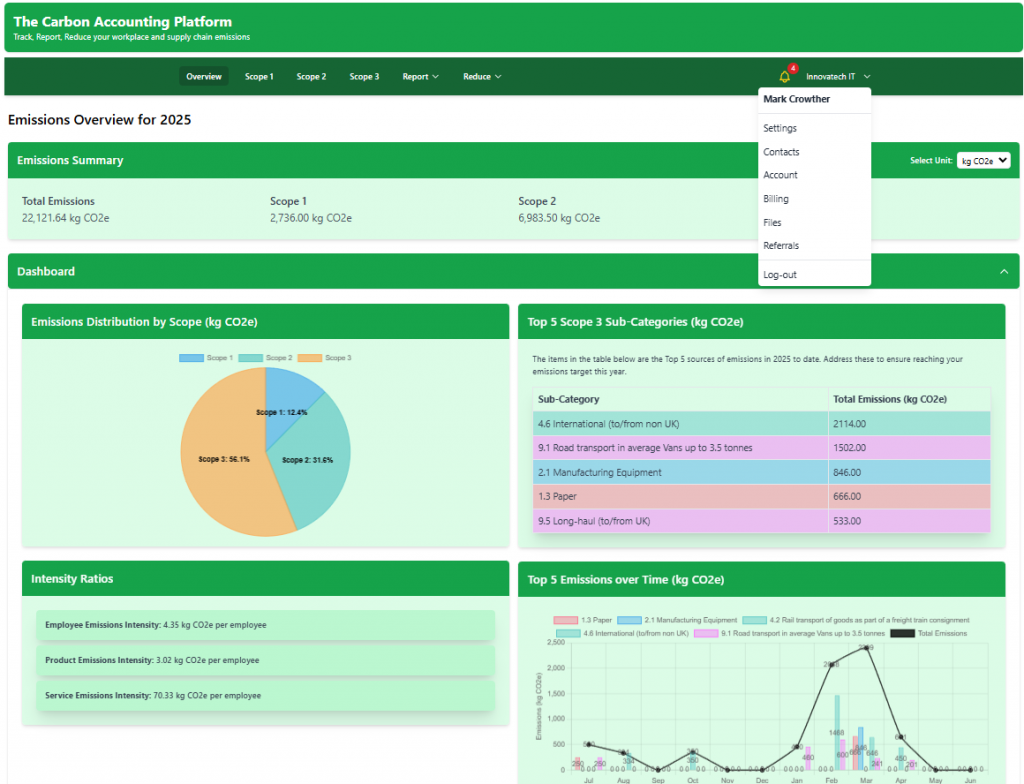— We’re in Beta! Read to the end to see how you can join us —
As pretty much everyone likely knows at this point I spent a good number of years at the formally existing BJSS (now part of CGI) as their Sustainability SME battling to gather up our Scope 3 data in order to achieve Net Zero 2025. There were a good number of reasons that effort was in ways both successful and a failure. One key issue was the lack of a carbon accounting platform. Now that I’m helping other clients get started on their emissions reduction journey I decided to do something about that.
Of course, again, as anyone who knows me will fully expect, I previously created an extremely feature rich Excel workbook to do the data capture, calculations, charting and collation of cross Category data from multiple sites over many months. Knock it all you like but Excel well understood is still one of the best PoC tools out there. Especially where we’re talking anything data and accounting.^ I shouldn’t need to explain but Excel has its limitations. Yet, we’ve all been there with enterprise level operations managed through Excel. Again I’ll go back to the PoC argument and agree that’s where they should end.
It’s complicated
Here’s the thing, Carbon Accounting and its adjunct practices of set-up (agreeing relevant Emissions Categories, Goals & Objectives, Risks & Opportunities, Boundaries, Accounting Principles and Consolidation Approaches) along with relevant data definition, resource allocation and governance – before you even get started on data capture, recording, emissions calculations, reporting, reduction strategies, supplier reviews, etc. is complicated. Exhaustingly so. I’ve done it several times now and it always feels like the start of a marathon race, uphill.
Available Platforms
There are a whole range of Carbon Accounting / ESG type tools out there. Over the last fortnight I’ve been doing a deeper dive and and there’s three things I’ve noticed:
- They are overly complicated (e.g. 120 questions just to get started)
- They’re overly expensive (e.g. $1,000s/$10,000s per month, $100,000s per year in cost)
- They’re overly reliant on expertise (Most users are not formally trained)
Let’s take these bug-bears in order:
Complicated – I keep saying this but it’s likely my number one bug-bear. If you open any enterprise level software and aren’t clear what to do it’s an issue. An all too common issue unfortunately that impedes operational efficiency, progress and utilisation. Your team MUST be able to use the solution with near intuitive ease.
Expensive – I get the key is to ‘charge what the market can bear’ but the memo clearly went out that revenue maximising was the order of the day (again, I get it). But, if you’re charging thousands a month for software that is difficult to use you’re failing the market and excluding a huge number of SMEs that simply can’t afford it. SMEs that need to be on board with Net Zero and actively engaged in the UK’s 2050 Net Zero goal.
Reliant on Expertise – I have 6 years doing this, am formally trained (WRI & REI), practiced in financial accounting and I’m still learning. What chance does someone seconded off another role, likely as a part-time side-of-desk activity and without formal training have deciphering these tools and the process and practice needed?
A strong third issue with heavy weight enterprise-level software is that it is often overly demanding in terms of required professional expertise. These platforms frequently assume users have advanced technical or accounting knowledge, resulting in steep learning curves and significant training requirements before teams can use the software effectively
That’s why…
I’m building the Carbon Accounting Platform I wish I’d had
Lucky for me I have a unique set of skills, built and honed over many years. That unique set of skills is software development, financial accounting and all things Net Zero – putting me in a likely unique position to define, design and build a Carbon Accounting Platform that I wish we’d had when I started doing this all those years back at BJSS.
Here’s the differences though, this platform is:
- Simplified
- Reasonably Priced
- Intuitive to Use
As above, let’s take these guiding principles in order:
Simplified – In just 5 Steps from first log-in you’re set-up entering data, leveraging the emissions calculation engine and database that works seamlessly in the background, auto generating dashboards and using pre-cut templates for things like Supplier Emissions Evaluations and SECR, ESOS, Scope 3 and ad-hoc reports.

Reasonably Priced – Pricing will be $100s per month, not $1000s or $10,000s. Pricing is entirely value based and tailored to specific needs, scale, and ability to pay so it is affordable to Micro, Small, Medium and Large enterprise alike.

Intuitive to Use – If you’re the Office Manager, part of the Accounts Team or involved in Purchasing for example – you’re going to ‘get’ the platform. You’ll need to learn a few terms but it’s no more that you did for accounting categories and supplier management.

We’re in Beta – want to join us?
As with all good software development we’ve moved from Alpha to the Beta phase. There’s plenty of features we want to add and the emissions database is growing every day. But right now – here’s what you need to do:
Connect and send me a message if you’re interested in joining the 2nd round of the Beta Programme when we open it up later in the year.
Thanks for reading!
Mark
^ Caveat – it is if you’re not a developer. If you are it’s trivial to cut a web front end, blend in some local storage and a bit of React and you’re leagues ahead. Most people aren’t a developer but they know how to use the Office suite.

